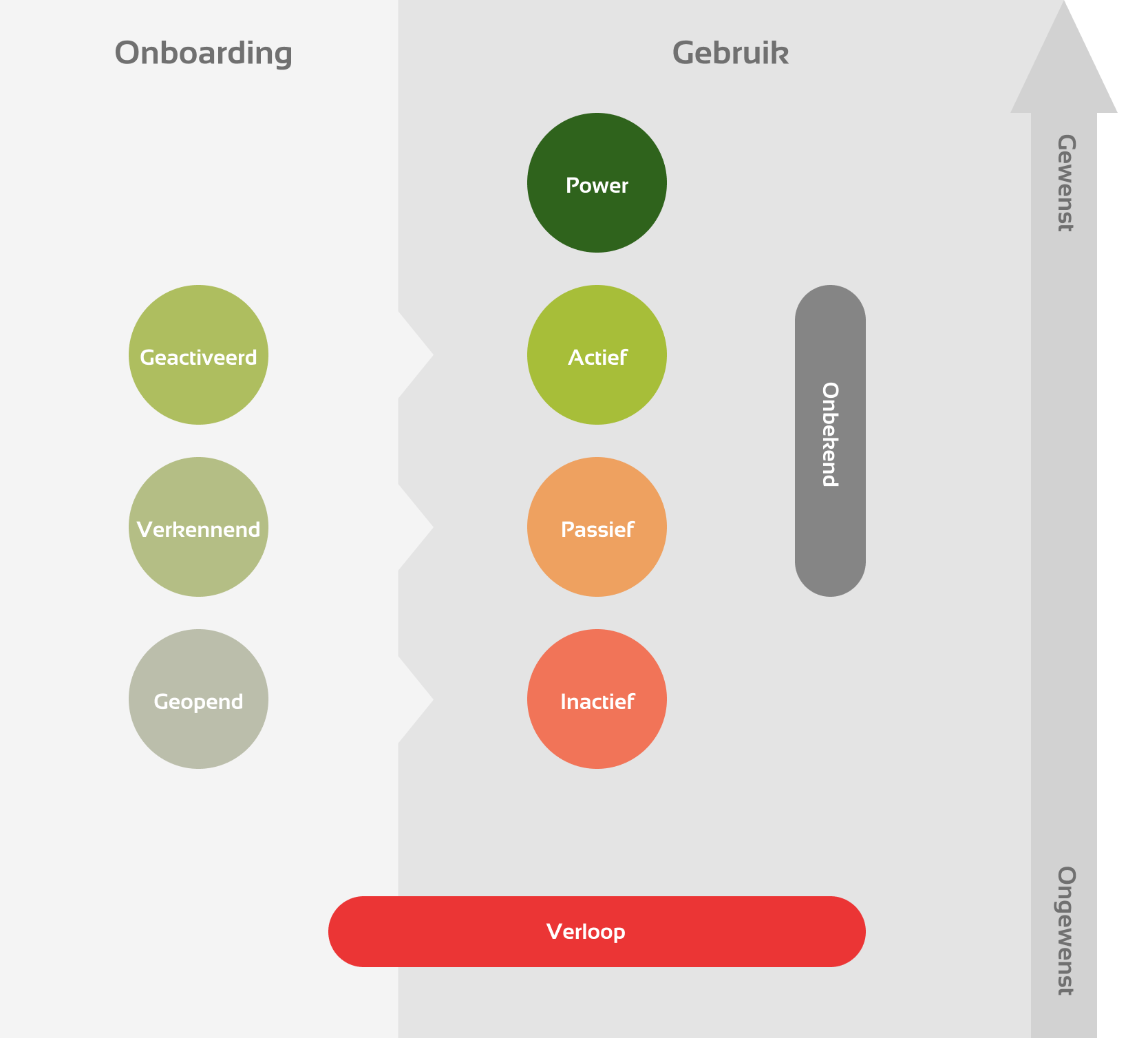Evidence-driven product growth
5 tips to start managing based on value in your product team
- Article
- Customer Experience


Digitalisation, digital transformation, start-ups: digital products are being developed all around us. Think of banks that serve users entirely via an app, the entertainment industry that makes content available via an app, and fully digital work processes. One thing is certain: users of a product want to get value from it. Strangely enough, this is often not looked at on a structural basis in practice.
You can gain valuable insights from the use of a product. It is also an important predictor of success. It's time to open the product black box and see what really happens to your products.

A common scenario is measuring only from the business perspective. For example, with a SaaS, there is a trial/free version of the application. Metrics that are often looked at are:
- Creating an account
- Downloading/Opening
- Purchase
- Retention, Upsell, Customer Lifetime Value (CLTV)
While the user's primary objective is to see whether the product provides value for their situation, the organisation often looks for indications of whether the user will deliver business value.
Behaviour is linked to value
Insight into product use is essential to see if someone is extracting value from the product. If you don't know whether your users are getting value out of your product, you could be sitting on a bubble of (potential) customers. If a product delivers value, users are more likely to stay longer. You want to get to a situation where there is a balance between the problems you solve for the customer and long-term business success.

Every new and/or potential customer will enter this playing field from the first time they open the application. Where are your customers now?
Besides understanding retention and user behaviour, you want to see what behaviour, which delivers business value, you can encourage. These are the outcomes. For the health of the business, this is essential to measure so you can manage it. A higher activity can lead to higher retention and the possible selling of additional products and services.

Project Logic Model, in which it is clearly visible how product team activity and business impact are connected through outcomes.
When you focus on the outcome metrics, you get a better picture of which activities trigger changes that can have an impact. Outcomes are described as the missing link between what is created (Output) and what has delivered business value (Impact). Josh Seidon and Jeff Gothelf nicely described the difference between outcomes and impact in articles and in a book.
Product Team activity linked to value
As a Product Team, you want what you create to be used and that it actually helps users achieve their goals. Continuously putting functionalities and changes live may not have the desired effect. You have to want to see whether problems have been solved, whether the behaviour has changed, and whether you can also see this on the bottom line. Influencing and changing behaviour is essential.
The 5 Essential Steps of Evidence-Driven Product Growth
Product usage analysis is essential to drive success. Discover how to approach this in 5 steps.
Step 1: Map out how you deliver value
First, map out how your product delivers value to the end user and in what behaviour this is expressed in the product. You want to encourage any behaviour that generates business value. For this, you can, for example, do user research, draw up North Star Metrics and define outcomes.
Step 2: Analyse the current situation
It is important to map the different users in combination with current-state and desired-state Experience Maps, Customer Journeys, retention and usage behaviour. It also often helps to analyse and classify reviews, in which users often raise their pain points.
Where are the pain points and where do you see opportunities? An analysis of the current situation will help you map this out. You can use different qualitative and quantitative methods for this.
Step 3: Focus on some opportunities and solutions
When you have mapped out pain points and opportunities, you start looking at why this is a pain point or opportunity. A pain point can have various causes. A useful way to display this is Teresa Torres' opportunity solution tree. This way, you tackle problems and opportunities instead of creating solutions without understanding the problem and linking it to the desired outcomes.
Step 4: Redefine success within the team
Thanks to a clear problem definition and the link with the KPI of outcome, you can now define success on 4 different levels:
- Team success: going live was successful within a certain scope, time and cost.
- Solution success: Going live solved the user's problem.
- Product success: Solving the problem has produced valuable behavior.
- Business impact: the behaviour is visible on the bottom line; this is not often the case because there are many initiatives, and the product is in a larger market.
Unfortunately, not everything is easier to measure, or to relate to something. The translation to business impact is often a challenge due to the great complexity involved.
Step 5: Experiment and Learn
A solid process for reflection and prioritisation is very important. Reflect on every point in the process you are working on and prioritise appropriately. Consider what it costs to learn, how long it takes to learn, and the risk you run if your assumption is wrong. There is no single moment of prioritisation; this will have to be woven into your process and is a subject in itself.
Formulate your solutions as hypotheses with explicit assumptions linked to the user problem and the metrics you want to influence. This will help to map the success and adopt the right attitude towards your output within the team.
Conclusion
It is essential to have insight into your product use. This way, you can discover where there are gaps that you can close and use your Product Team as targeted as possible. It is good to establish this in a structured way in order to grow.
Setting this up requires some work: setting up a good process, defining and implementing measurements, and analysing and managing research properly.
Besides skills and processes, it will also involve a culture change. All in all, a fun challenge whereby you can also just start small. We will be happy to assist you!
This is an article by Bastiaan Boel, Customer Experience Specialist at Digital Power
Bastiaan's mission is to make better digital products. He has extensive experience in measuring and optimising apps at organisations such as KLM, Interpolis, KPN and Philips.
Customer Experience Specialistbastiaan.boel@digital-power.com
Receive data insights, use cases and behind-the-scenes peeks once a month?
Sign up for our email list and stay 'up to data':